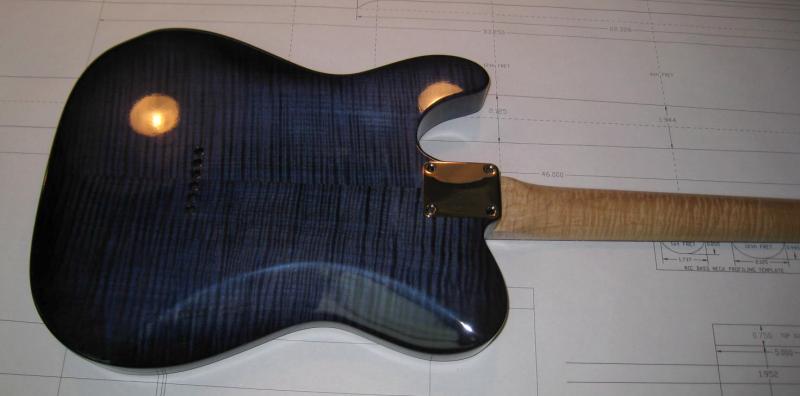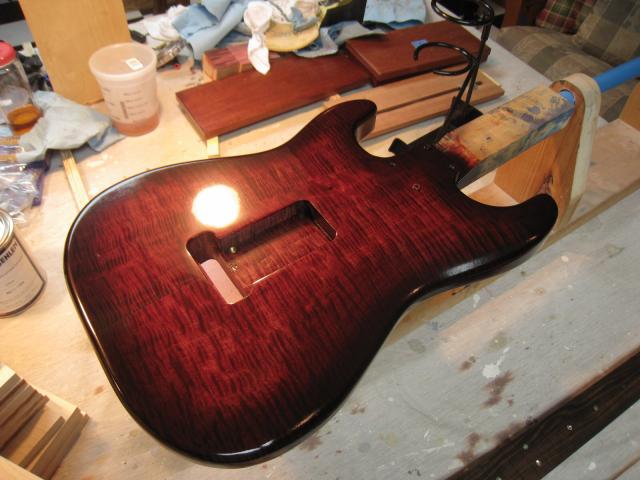Hey guys.
I'm doing a Squier Tele to Esquire conversion, and picked up two pieces of over-sized bird's eye veneer for this. Mind you, I'm only doing the face of the guitar; the sides and back will remain black. I should only need one piece. The other is insurance, or for another guitar down the road.
I've yet to glue it on (still filling the neck cavity with wood filler in thin layers), so here are my questions:
1) Should I glue a rough cut piece on there and router off the edges? I have a friend who can do this for me. If I attempted this myself, it would go in the comedy section.
Or should I cut the piece exact? I guess I would use a scissor for this. (The veneer isn't super thin but thin enough for scissor, and it isn't paper-backed.)
2) I want to do a 2-tint using Transtint. Is there a gallery here of photos of what people have done, that might also include the tint #s used?
You see, I understand the value of experimenting on scrap, but I'd like to at least have a STARTING point on which dyes to buy.
I appreciate your help, because I'm afraid. Very afraid.




 Reply With Quote
Reply With Quote



